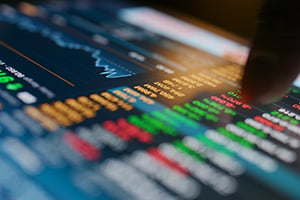 Today marks, in many ways, the birthday of my profession. On May 26, 1896, Charles Dow first published a list of 12 industrial companies, combining their prices in an index for the first public index of the stock market. Note that phrase, because a standard of measurement—an index—was the necessary first step in transforming a market of stocks (i.e., individual companies) into a stock market. Before, we had a bunch of trees, and it was hard for investors to see the forest. Dow put the forest front and center with his index.
Today marks, in many ways, the birthday of my profession. On May 26, 1896, Charles Dow first published a list of 12 industrial companies, combining their prices in an index for the first public index of the stock market. Note that phrase, because a standard of measurement—an index—was the necessary first step in transforming a market of stocks (i.e., individual companies) into a stock market. Before, we had a bunch of trees, and it was hard for investors to see the forest. Dow put the forest front and center with his index.
The Power of the Idea
The power of the idea has been best shown by its durability. Companies come and go, through depressions and wars, but the index goes on. An even better demonstration of its power is the flattery of imitation, as pretty much every conceivable way to look at a market of stocks now has its own corresponding index. Finally, the proof of the idea’s power comes from the recent triumph of the very idea of index investing. Why invest in a company when you can invest in the market as a whole? The market of stocks (the collection of trees) has now transformed completely into the stock market (the forest).
Another way of understanding the power of the idea is to consider how many ways indices can be constructed. They can be broken down by company factors, such as size, industry, sector, and so forth. They can be weighted in different ways, by market capitalization or by fundamental factors such as company sales. They can be organized based on geography. They can be based on factors of the stocks themselves, such as volatility. And on and on.
The idea of an index has provided the structure for the evolution of the modern economy in direct connection with the development of the financial industry and investing profession. A growing industrial economy needed a way to direct capital to growing companies. As wealth was created across the country, that surplus of capital wanted to find a way to grow. There was an obvious need to make that connection, and the stock markets grew rapidly to do just that.
A Standard of Performance
But, as the saying goes, you can only manage what you can measure. How is a company doing? How is it valued? Is this a good deal? How can we decide? For investors, doing one-off deals with no standard of comparison makes markets less efficient, which hurts the companies trying to raise capital, and it is riskier, which hurts investors trying to place capital. The Dow index was the first public attempt to solve this problem, by providing a performance standard against which other companies could be measured. For the first time, companies had a benchmark to help them raise capital, and investors had a benchmark against which to measure performance. Again, the utility of the idea has been proven over and over again since then.
For my own profession, that standard—that benchmark—has enabled us to better match our clients’ goals and risk tolerances every year. By better measuring what is going on and what it means to clients, it helps everyone in the day-to-day quest to meet our financial goals. The utility here is not just for companies or professionals, but for every investor out there.
It All Started with the Dow
We are not done yet, of course. Every year sees new indices introduced, new ways to measure, understand, and hopefully manage what is happening in the financial markets. As long as the markets keep evolving, which is to say forever, we will never be done. But it all started back with the introduction of the Dow. Happy birthday!


 Print
Print

